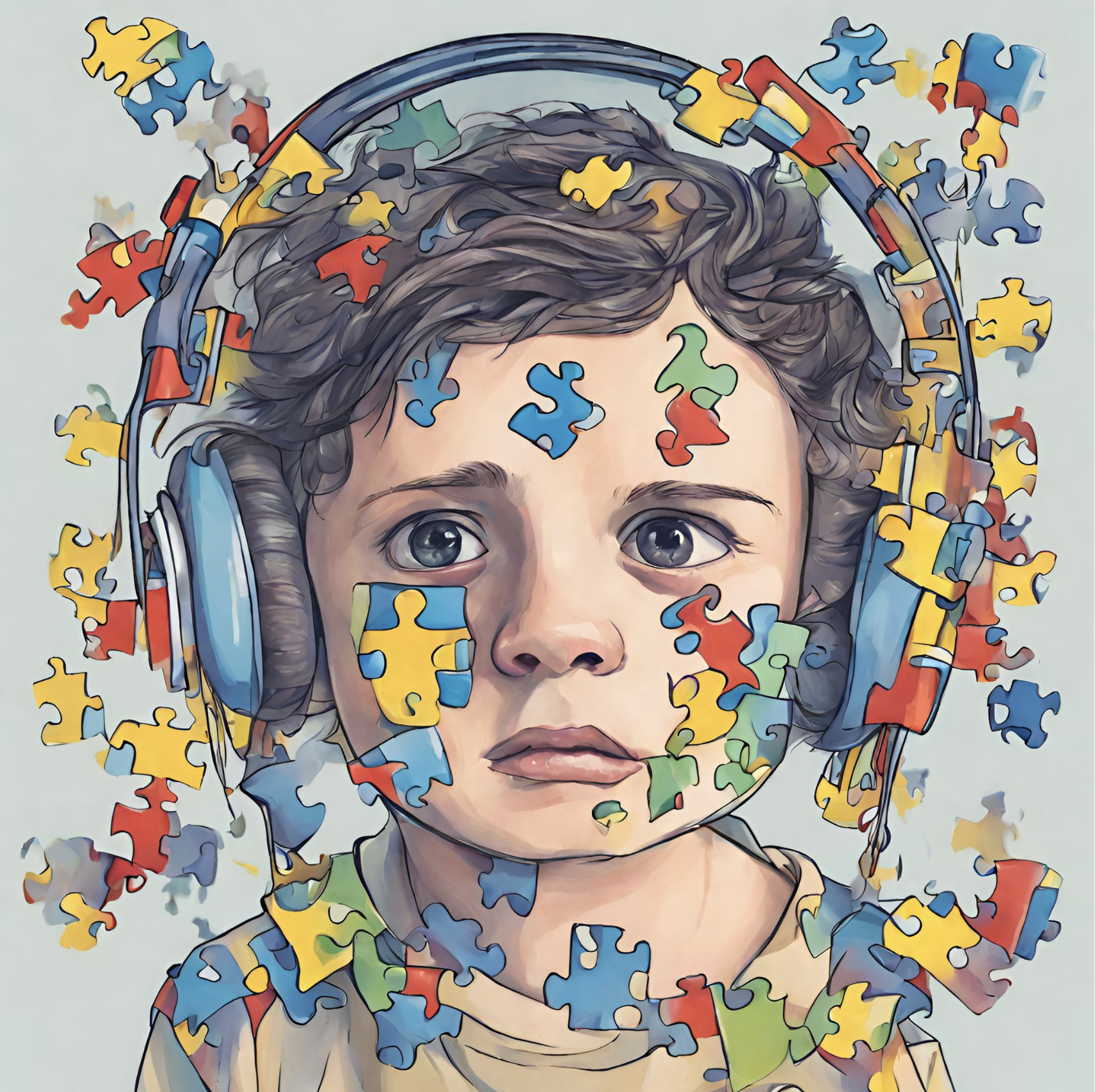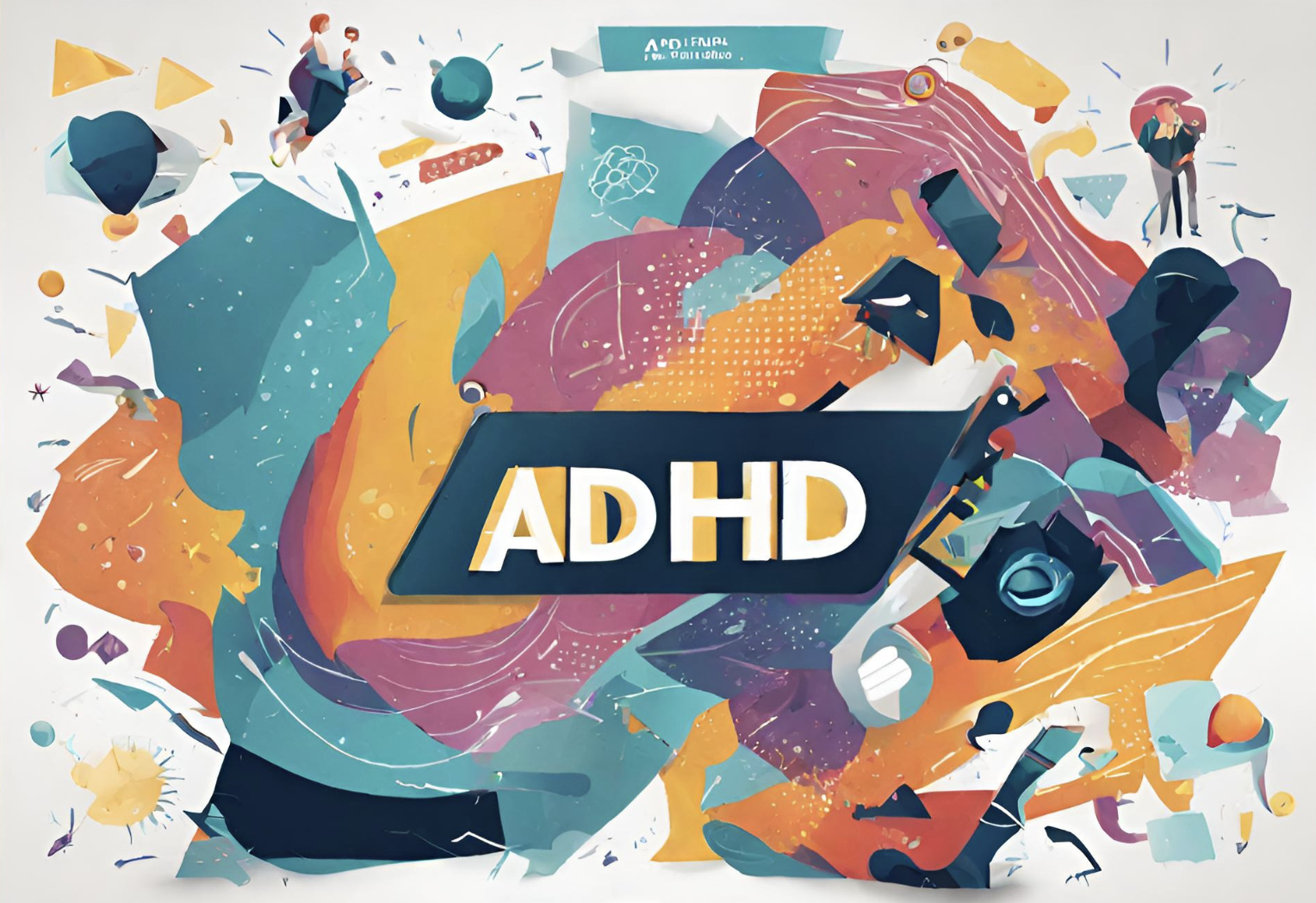Imagine a world where the hum of fluorescent lights isn’t a constant thrumming in your head, where the cacophony of a bustling street fades into a gentle murmur, and where the scratchy wool sweater doesn’t send shivers down your spine. For many individuals with neurodiverse conditions like autism and ADHD, this isn’t a fantasy – it’s a necessity.
Sensory overload, the overwhelming bombardment of sensory information, can be a daily struggle for those who process the world differently. This can manifest in various ways: bright lights causing migraines, loud noises triggering anxiety, strong smells inducing nausea, or certain textures leading to meltdowns.
However, by creating sensory-friendly environments, we can significantly improve the lives of neurodiverse individuals. These spaces provide a sense of calm, control, and predictability, allowing them to participate more fully in daily activities without the constant struggle against sensory overload.
Understanding Sensory Processing
It’s crucial to acknowledge that neurodiverse individuals often process sensory information differently than the neurotypical population. This can be categorized into two main areas:
- Hypersensitivity: Certain senses are overly sensitive, leading to discomfort or aversion to specific stimuli like loud noises, bright lights, strong smells, or rough textures.
- Hyposensitivity: Some senses may be under-responsive, leading to a need for increased sensory input to feel engaged. This could involve seeking out loud noises, rough textures, or constant movement.
Building a Calming Haven and Avoid Sensory Overload
Creating a sensory-friendly environment involves considering the impact of various sensory inputs and implementing strategies to manage them. Here are some key areas to focus on:
1. Visual Stimulation:
- Clutter Control: Minimize visual clutter by organising belongings, using clear storage solutions, and avoiding excessive decorations. A cluttered space can be overwhelming and visually overstimulating.
- Colour Palette: Opt for neutral colours and avoid busy patterns that can be distracting. Consider incorporating calming colours like blue or green, as these are often associated with tranquility.
- Lighting: Employ natural light whenever possible. Utilise dimmable lights and avoid harsh overhead lighting. Consider sensory mood lights for calming effects and adjustable colour palettes.
2. Auditory Stimulation:
- Noise Reduction: Minimise background noise by using soundproofing materials, turning off unnecessary electronics, and encouraging quiet activities.
- Designated Quiet Areas: Provide a quiet space to retreat to when overwhelmed by noise. This could be a library corner, a designated relaxation room, or even a quiet corner in a classroom.
- Sensory Tools: Offer noise-cancelling headphones or ear defenders for individuals who find specific sounds unbearable. This can be particularly helpful in loud environments like shopping centres or busy streets.
3. Tactile Stimulation:
- Texture Awareness: Be mindful of textures in furniture, clothing, and everyday objects. Offer a variety of textures for individuals to explore and self-regulate. This could include soft blankets, smooth surfaces, or textured fidget toys.
- Fidget Toys: Providing fidget toys with different textures can be a helpful tool for managing anxiety and focusing attention. These can be anything from simple stress balls to textured chewable necklaces.
- Weighted Blankets: Some individuals find deep pressure calming, so weighted blankets can be a beneficial tool for managing sensory overload and promoting relaxation.
4. Olfactory Stimulation:
- Air Quality: Maintain good air quality by ensuring proper ventilation and avoiding strong perfumes or cleaning products. These can trigger sensitivities and cause discomfort.
- Calming Scents: Offer essential oils or diffusers with calming scents like lavender or chamomile. These can create a more soothing atmosphere and promote feelings of well-being.
5. Additional Considerations:
- Temperature Control: Maintaining a comfortable temperature is crucial. Extreme heat or cold can exacerbate sensory sensitivities and lead to discomfort.
- Flexible Seating: Offer flexible seating options like beanbags or wobble chairs to allow for movement and self-regulation. This can be particularly beneficial for children with ADHD who may struggle to sit still for long periods.
- Sensory Tools: Provide access to sensory tools like fidget spinners, chewable necklaces, or calming putty. These can be helpful for individuals who need additional sensory input to self-regulate.
- Communication: Clearly communicate expectations and provide visual aids when necessary. This can help individuals with sensory processing difficulties understand their surroundings and anticipate potential triggers.
- Sensory Breaks: Encourage regular breaks in quiet spaces for individuals to self-regulate. This could involve taking a walk outside, lying down in a quiet room, or simply taking a few deep breaths.

Coaching for Sensory Overload Management
Beyond creating a sensory-friendly environment, coaching can be a powerful tool for individuals with ADHD and/or autism to manage sensory overload. A trained coach can provide personalised guidance and support in developing self-awareness of sensory triggers, identifying and implementing coping mechanisms, and building resilience to overstimulation. Through coaching, individuals can learn valuable skills like:
- Identifying Early Warning Signs: Recognising the subtle signs of sensory overload before it escalates into a meltdown or shutdown. This can include physical sensations like increased heart rate, difficulty concentrating, or feeling overwhelmed.
- Developing Calming Strategies: Practicing techniques like deep breathing exercises, mindfulness meditation, or progressive muscle relaxation to self-regulate and regain composure when experiencing sensory overload.
- Communicating Needs Effectively: Learning to communicate their sensory needs clearly and confidently to others, whether it’s requesting a quiet space, adjusting lighting, or simply taking a break.
- Building a Support Network: Identifying and connecting with supportive individuals who understand their challenges and can offer encouragement and assistance.
Building a More Inclusive World
Creating sensory-friendly environments benefits everyone, not just neurodiverse individuals. These spaces promote:
- Reduced Anxiety and Stress: By minimising sensory overload, individuals feel calmer and more in control, leading to reduced anxiety and stress levels.
- Improved Focus and Concentration: A less stimulating environment allows for better focus and engagement in tasks, enhancing productivity and learning.
- Enhanced Social Interaction: Sensory-friendly spaces create a more inclusive environment, fostering positive social interactions and reducing social isolation.
- Increased Participation: Individuals with sensory sensitivities are more likely to participate in activities and events when their needs are met, leading to a richer and more fulfilling life.
By implementing these strategies, we can create spaces that are welcoming and accessible for everyone. This allows neurodiverse individuals to thrive and participate fully in society without the constant struggle of sensory overload. Remember, small changes can make a significant difference in the lives of those who experience the world differently.
Let’s work together to build a world where sensory-friendly environments are the norm, not the exception. A world where everyone feels comfortable, empowered, and embraced for who they are.

Useful Links for Sensory Overload
Here are some helpful links for further information on creating sensory-friendly environments and managing sensory overload:
General Resources:
- The Sensory Processing Disorder Foundation
- Autism Spectrum Australia
- The National Autistic Society (UK)
- Sensory Friendly
Articles and Guides:
- Coping Strategies for Adults with Sensory Overload
- Treating Sensory Processing Issues
- Resources for Parents and Professionals
Coaching and Support:
- The Very Versatile Lemon – ADHD & ASD Coaching
- The International Coach Federation (ICF)
- ADDitude Magazine
- The National Association of Social Workers (NASW)
Remember, these are just a few starting points. Many other resources and organisations are dedicated to supporting individuals with neurodiverse conditions and sensory sensitivities.
Attention Deficit Hyperactivity Disorder (ADHD) is a common neurodevelopmental condition that affects millions of individuals across all ages. Despite its prevalence, there are still many misconceptions surrounding ADHD. These misconceptions can lead to misdiagnosis, lack of understanding, and a sense of isolation for those living with ADHD. In this blog post, we’ll debunk some of the most common myths about ADHD, providing a clearer picture of this condition and its impact on individuals.
Myth #1: ADHD is Just About Fidgeting and Not Paying Attention
Truth: While inattentiveness and hyperactivity/impulsivity are core symptoms of ADHD, the condition manifests in a much broader way. Difficulty with organisation, planning, time management, emotional regulation, and self-control are all common challenges faced by individuals with ADHD. The presentation of these symptoms can also vary significantly. Some may predominantly struggle with inattention, appearing daydreamy or easily distracted, while others might exhibit more hyperactivity or impulsivity, leading to restlessness and difficulty sitting still.
Myth #2: ADHD Only Affects Children
Truth: ADHD is a lifelong condition, and its symptoms can persist well into adulthood. While some children may outgrow certain hyperactive behaviours, the core challenges of ADHD often continue to impact adults in their personal, academic, and professional lives. It’s estimated that around 2.5% of Australian adults have ADHD.
Myth #3: ADHD is Caused by Bad Parenting or Lack of Discipline
Truth: There’s no single cause for ADHD, but it’s believed to be a combination of genetic and environmental factors. Brain scans of individuals with ADHD show differences in brain structure and function compared to neurotypical brains. While parenting style can influence how ADHD manifests, it doesn’t cause the condition itself.
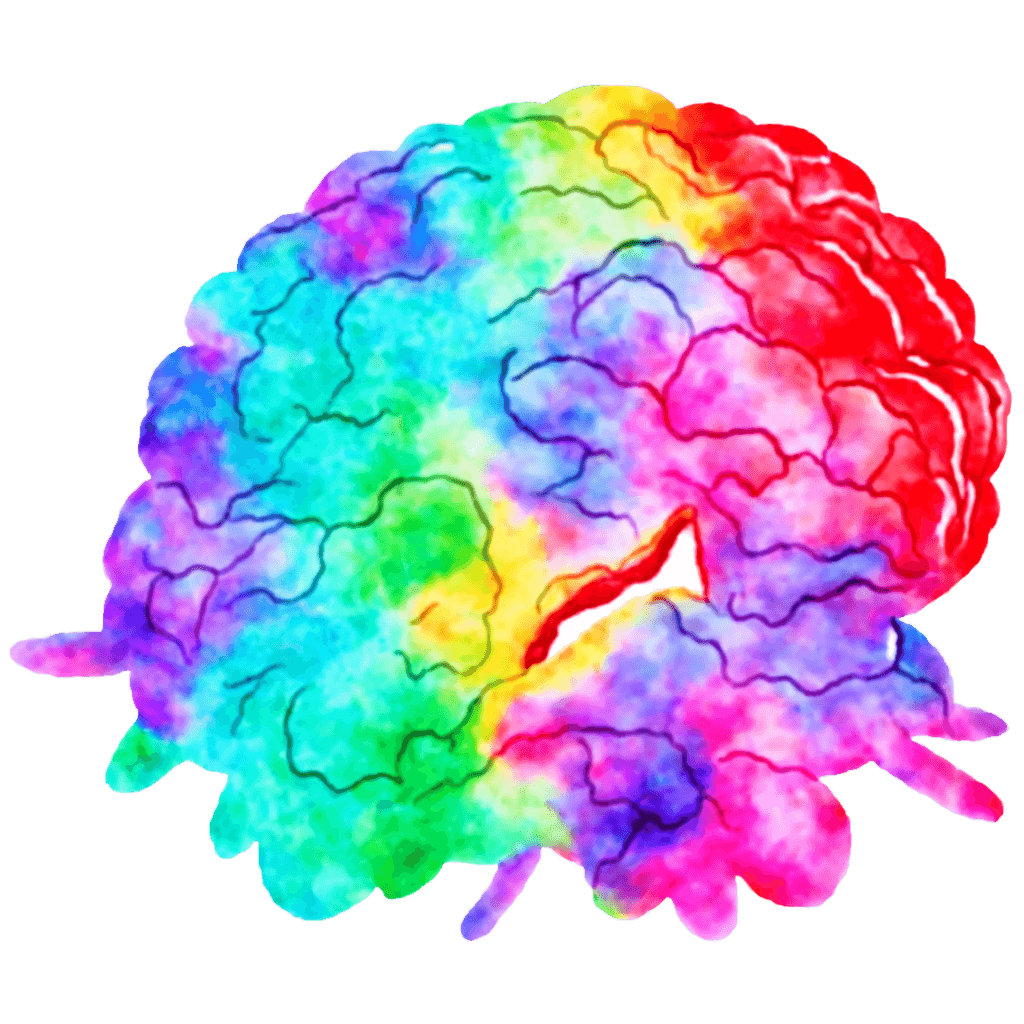
Myth #4: People with ADHD Can’t Be Successful
Truth: Many successful individuals across various fields have ADHD. Their stories highlight that ADHD doesn’t define potential. With proper diagnosis, self-awareness, and support strategies, individuals with ADHD can achieve great things. Some celebrities with ADHD include Rebel Wilson (actress), Richard Branson (entrepreneur), and Alan Jones (former race car driver).
Myth #5: Medication is the Only Way to Manage ADHD
Truth: While medication can be a valuable tool in managing ADHD symptoms, it’s not the only option. A comprehensive approach often includes:
- Psychotherapy: Cognitive behavioural therapy (CBT) can help individuals with ADHD develop strategies for managing their symptoms, improving emotional regulation, and building self-esteem.
- Coaching: ADHD coaching focuses on developing practical skills for managing time, organisation, and executive function challenges.
- Lifestyle changes: Regular exercise, a healthy diet, and adequate sleep can significantly improve symptoms and overall well-being for individuals with ADHD.
Additional Points
Here are some additional points to keep in mind:
- Accessibility to Diagnosis: Getting an ADHD diagnosis can be a lengthy and expensive process. This can be a significant barrier for those seeking support.
- Stigma: Unfortunately, stigma surrounding ADHD persists. This can be discouraging for those seeking diagnosis and support.
- Support Resources: While resources are available for individuals with ADHD, there’s a need for increased awareness and accessibility to support programs.
Moving Forward
By debunking these myths, we can create a more informed and understanding environment for those with ADHD. Here’s what we can do:
- Raise awareness: Educating others about ADHD can help reduce stigma and promote understanding.
- Advocate for better access to diagnosis and support: Prioritise making diagnosis and support services more accessible and affordable.
- Celebrate neurodiversity: Understanding and appreciating neurodiversity is crucial. ADHD comes with strengths as well as challenges.

Empowering Yourself and Others
Living with ADHD can be challenging, but it doesn’t have to hold you back. Here are some ways you can empower yourself and others:
- Seek a diagnosis: A diagnosis is the first step towards getting the support you need. While the process might be lengthy, it’s an investment in your well-being.
- Learn about ADHD: Educate yourself about the condition, its symptoms, and available management strategies.
- Connect with support groups: Connecting with others who understand your experiences can be invaluable. Online forums and local support groups can offer a sense of community and shared understanding.
- Advocate for yourself: Don’t be afraid to speak up for your needs, whether it’s at school, university, or work.
- Develop coping mechanisms: Explore what works best for you in managing ADHD symptoms. This might include techniques for time management, organisation, or emotional regulation.
- Celebrate your strengths: ADHD comes with unique strengths like creativity, problem-solving skills, and out-of-the-box thinking. Embrace these strengths and leverage them in your life.
Living with ADHD
If you have ADHD, you’re not alone. There are resources available to help you manage your symptoms and live a fulfilling life. Here are some resources you might find helpful:
- Attention Australia: https://www.adhdaustralia.org.au/
- Learning Difficulties Australia: https://ldaustralia.org/
- The Australasian College of Educational Psychologists: [invalid URL removed] (can help you find a qualified psychologist for ADHD assessment)
- Beyond Blue: https://www.beyondblue.org.au/ (provides support for mental health conditions, including ADHD)
Conclusion
ADHD is a complex neurodevelopmental condition, but it’s not a life sentence. By dispelling myths, promoting awareness, and advocating for better support, we can create a more positive and empowering environment for individuals with ADHD. Remember, you are not alone in this journey. With knowledge, self-acceptance, and the right support system, you can thrive with ADHD and achieve your full potential.
Attention Deficit Hyperactivity Disorder (ADHD) and Autism Spectrum Disorder (ASD) are neurodevelopmental conditions that can significantly impact a person’s life. While they are distinct diagnoses, it’s not uncommon for them to co-occur. In fact, research suggests that between 30-80% of adults with ADHD also exhibit symptoms of ASD, and vice versa. This co-occurrence can create unique challenges and require a tailored approach, such as ADHD and ASD coaching, to support individuals effectively.
Understanding Co-Occurring ADHD and Autism
Shared Traits and Differences
Both ADHD and ASD affect how a person processes information, interacts with the environment, and manages emotions. Common shared traits include:
- Executive Functioning Difficulties: Challenges with planning, organisation, time management, and self-regulation.
- Social Difficulties: Difficulty navigating social situations, understanding social cues, and building relationships.
- Sensory Processing Issues: Over- or under-sensitivity to sensory stimuli like sounds, textures, or lights.
However, there are also key differences:
- Focus and Attention: ADHD is characterised by hyperactivity, impulsivity, and difficulty sustaining attention. While some individuals with ASD may experience inattentiveness, it’s often due to intense focus on specific interests or sensory overload.
- Social Interaction: People with ASD often have a strong desire for social connection, but struggle with understanding social cues and unwritten rules. In contrast, those with ADHD may prioritise social interaction but have difficulty staying engaged or understanding social complexities.
- Repetitive Behaviors: Repetitive behaviors (stereotypies) are more common in ASD, often driven by a need for comfort or predictability. While individuals with ADHD might exhibit repetitive behaviors, they are usually tied to hyperactivity or impulsivity.
The Complexity of Co-Occurrence in ADHD and Autism
Having both ADHD and ASD can create a complex and layered experience. The challenges of each condition can amplify the other, making it difficult to manage symptoms and navigate daily life. For example, someone with co-occurring ADHD and ASD might struggle with hyperactivity and impulsivity in social situations, leading to social anxiety and further withdrawal.

Diagnosis and Challenges
Diagnosing co-occurring ADHD and ASD can be challenging, as symptoms can overlap. A thorough evaluation by a qualified professional is essential to ensure an accurate diagnosis and develop an appropriate support plan. Additionally, individuals with co-occurring conditions may face unique challenges in accessing diagnosis and support. Traditional approaches might not fully capture the complexities of their experience.
ADHD and Autism Coaching as a Support Strategy
Here’s where ADHD and ASD coaching can be a powerful tool for adults navigating co-occurring diagnoses. Coaching offers a personalised approach that focuses on developing skills and strategies to manage symptoms and improve overall well-being. Here’s how coaching can be beneficial:
- Self-Awareness: A coach can help individuals identify their specific strengths, challenges, and how their co-occurring conditions manifest. This self-awareness empowers them to make informed choices and manage their conditions effectively.
- Executive Functioning Skills: Coaching can help individuals develop strategies for planning, organization, time management, and self-regulation. This is crucial for managing tasks, meeting deadlines, and maintaining a sense of order in their lives.
- Emotional Regulation: Individuals with co-occurring conditions may struggle with emotional dysregulation. Coaching can help them develop tools for managing strong emotions, reducing stress, and improving emotional well-being.
- Social Skills Development: Understanding social cues, navigating conversations, and building relationships can be challenging for those with co-occurring ADHD and ASD. Coaching can provide strategies for developing social skills, improving communication, and fostering meaningful connections.
- Sensory Processing Management: Sensory overload can be a significant issue for some individuals. A coach can help identify triggers and develop strategies for managing sensory sensitivities, creating a more comfortable and manageable environment.
- Goal Setting and Motivation: Establishing realistic goals and maintaining motivation can be difficult. Coaching can help individuals set achievable goals, break them down into manageable steps, and develop strategies for staying motivated throughout the process.
- Advocacy Skills: Understanding their conditions and advocating for their needs can be empowering. Coaching can help individuals learn to communicate their needs effectively to healthcare providers, employers, and educators.
The Coaching Process for Co-Occurring ADHD and Autism
The coaching process is collaborative and tailored to the individual’s specific needs and goals. It typically involves:
- Initial Assessment: Discussing the individual’s challenges and goals.
- Developing a Coaching Plan: Creating a plan that outlines specific areas to focus on and strategies to implement.
- Coaching Sessions: Regular sessions where the coach provides guidance, support, and accountability.
- Action Steps: Implementing strategies and practising new skills between sessions.
- Ongoing Evaluation and Adjustment: Regularly reviewing progress and adjusting the plan as needed.
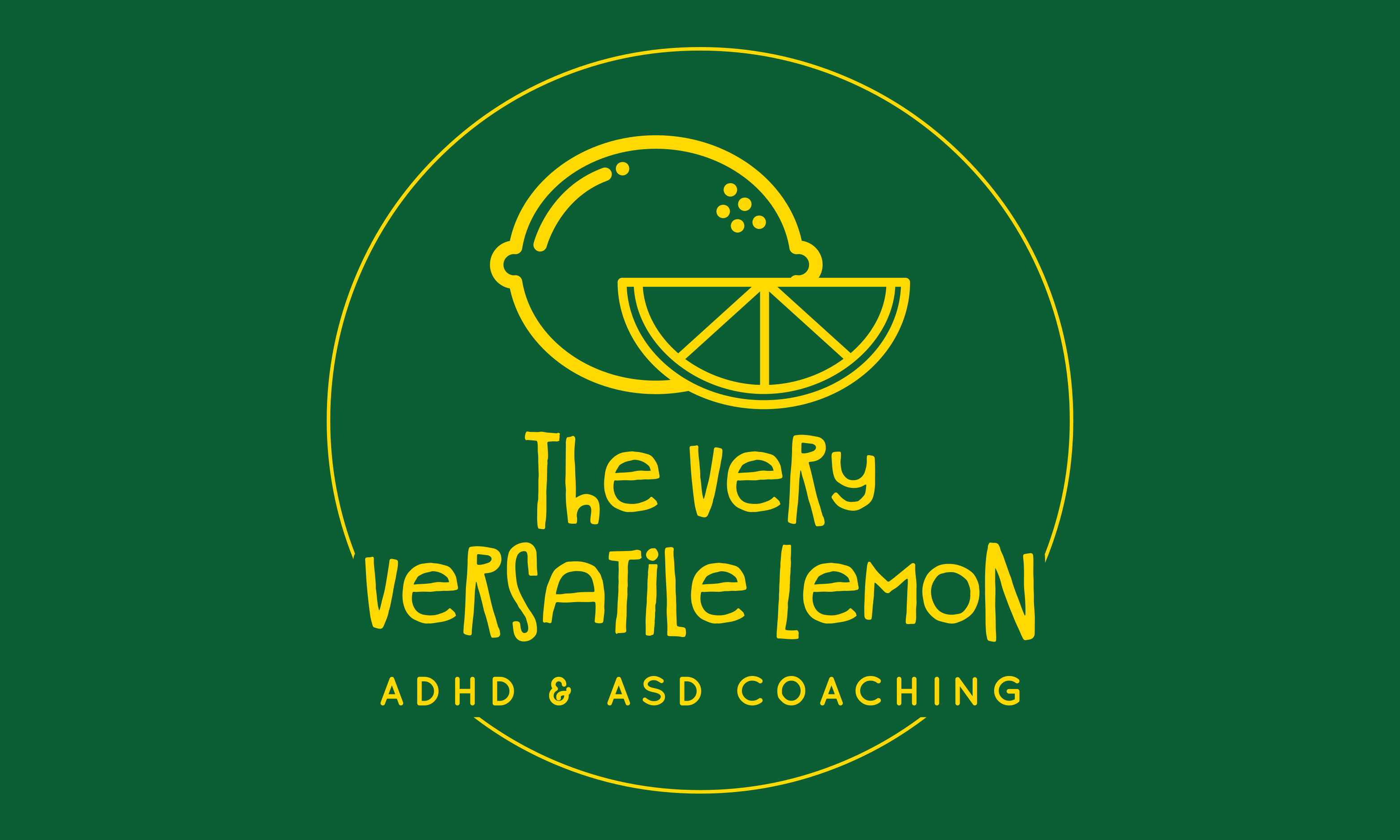
Benefits of Coaching for Co-Occurring ADHD and Autism
The benefits of coaching for adults with co-occurring ADHD and ASD are numerous. Here’s what you can expect:
- Improved Quality of Life: By managing symptoms and developing strategies, individuals can experience a significant improvement in their overall quality of life. This can include increased productivity, improved relationships, and a greater sense of well-being.
- Increased Self-Confidence: Learning how to manage co-occurring conditions can empower individuals and boost their self-confidence. Coaching helps them build on their strengths and celebrate their unique neurodiversity.
- Reduced Stress and Anxiety: Developing strategies for managing symptoms and emotions can significantly reduce stress and anxiety, leading to a calmer and more fulfilling life.
- Improved Relationships: Coaching can equip individuals with the skills they need to navigate social situations more effectively, leading to stronger relationships with family, friends, and colleagues.
- Greater Independence: Learning self-management skills allows individuals to gain greater independence and control over their lives, fostering a sense of self-efficacy.
Finding the Right ADHD and Autism Coach
When seeking an ADHD and ASD coach with expertise in co-occurring conditions, consider the following:
- Qualifications: Look for a coach certified by a reputable organisation, such as ADDCA (Attention Deficit Disorder Coaching Academy) or the International Coach Federation (ICF).
- Experience: Find a coach with experience working with adults who have both ADHD and ASD.
- Approach: Choose a coach whose approach aligns with your values and preferences. Some coaches focus on specific areas like executive function or social skills, while others offer a more holistic approach.
- Communication Style: Find a coach who you feel comfortable communicating with openly and honestly.


Conclusion
Co-occurring ADHD and ASD can be a complex challenge, but it doesn’t have to define your life. Coaching can be a powerful tool that can empower you to thrive. By developing a deeper understanding of yourself, learning new strategies, and receiving ongoing support, you can manage your symptoms, achieve your goals, and live a fulfilling life.
Additional Resources
- Attention Deficit Disorder Association: https://add.org/
- National Autistic Society: https://www.autism.org.uk/
- The Coaching Academy: https://www.the-coaching-academy.com/what-is-coaching/
- International Coach Federation: https://coachingfederation.org/
Remember: You are not alone. There are resources available to help you navigate co-occurring ADHD and ASD. Coaching can be a transformative journey towards self-discovery, empowerment, and a brighter future. Take the first step today and seek a qualified coach who can support you on your path.
For many individuals living with Attention Deficit Hyperactivity Disorder (ADHD), the world can be a whirlwind of stimuli, constant challenges with focus, and a yearning for structure. But on top of these core symptoms, a significant number of individuals with ADHD also grapple with a lesser-known phenomenon: Rejection Sensitivity Dysphoria (RSD). This potent combination can create a double whammy effect, intensifying feelings of rejection and leading to significant emotional distress. Let’s delve into the complexities of RSD and ADHD, explore how they intertwine, and identify strategies to navigate this challenging terrain.
Understanding Rejection Sensitivity Dysphoria (RSD)
RSD is not a clinical diagnosis but rather a cluster of emotional and behavioural responses associated with a heightened sensitivity to perceived rejection. It’s characterised by an intense emotional reaction to anything that feels like rejection, criticism, or disapproval, even if minor or unintentional. These reactions can include:
- Intense sadness or anger: Feeling deeply hurt or enraged by perceived rejection.
- Rumination: Obsessively dwelling on the rejection and replaying the situation in your mind.
- Social withdrawal: Isolating oneself to avoid further rejection.
- Self-blame and negative self-talk: Feeling like you’re the reason for the rejection and engaging in harsh self-criticism.
- Difficulty trusting others: Fearing further rejection, making it hard to build close relationships.
The ADHD-RSD Connection
While the exact cause of RSD is still being explored, there seems to be a strong link between ADHD and its development. Here’s how ADHD can contribute to RSD:
- Emotional Dysregulation: Difficulty managing emotions is a common feature of ADHD. This can make individuals with ADHD more vulnerable to feeling overwhelmed by perceived rejection.
- Black and White Thinking: ADHD can lead to a tendency to see things in extremes. A perceived slight can be interpreted as a complete rejection, intensifying the emotional response.
- Low Self-Esteem: Chronic struggles with focus and organisation can contribute to feelings of inadequacy, making individuals with ADHD more susceptible to feeling rejected.
- Hyperfocus on Mistakes: The tendency to hyperfocus on negative aspects can lead to dwelling on perceived criticism and amplifying its impact.

The Vicious Cycle
The combination of ADHD and RSD can create a vicious cycle:
- Fear of Rejection: Due to past experiences or heightened sensitivity, individuals with ADHD may become overly cautious and avoid social situations for fear of rejection.
- Misinterpreting Cues: Difficulty with social cues associated with ADHD can lead to misinterpretations of neutral interactions as rejection.
- Emotional Reaction: The perceived rejection triggers an intense emotional response like anger or sadness.
- Social Withdrawal: To avoid further emotional pain, the individual withdraws from social interactions, further limiting opportunities for positive connections.
Breaking Free from the Cycle: Strategies for Managing RSD with ADHD
While there’s no magic bullet for overcoming RSD, there are strategies that can help individuals with ADHD manage its impact:
- Challenge Negative Thoughts: Learn to identify and challenge self-critical thoughts and replace them with more balanced and realistic self-talk.
- Develop Emotional Regulation Skills: Practise techniques like mindfulness meditation, deep breathing exercises, or relaxation techniques to manage strong emotions.
- Improve Communication Skills: Work on expressing your needs clearly and directly to avoid misunderstandings.
- Build a Support System: Surround yourself with understanding friends, family, and professionals who can offer support and encouragement.
- ADHD Coaching: Coaching can help identify and modify negative thought patterns that contribute to RSD.

Strategies Specific to the Australian Context
Living with ADHD and RSD in Australia can present unique challenges. Here are some tips tailored to the Australian landscape:
- Seek Support from Local Organisations: Reach out to organisations like ADHD Australia or the Australasian College of Neuropsychologists for support and resources specific to the Australian context, or ones local to where you live.
- Consider Telehealth Options: Telehealth services can provide access to therapists and counsellors specialising in ADHD and RSD, even in remote areas.
- Mindfulness in the Australian Bush: Practising mindfulness outdoors, whether in a local park or on a bushwalking trip, can be a powerful way to manage stress and connect with nature.
Remember:
- You’re not alone. Many Australians with ADHD experience RSD.
- Be patient with yourself. Building coping skills takes time and effort.
- Celebrate small victories. Every step towards managing RSD is a positive step.
Building ADHD and RSD Resilience
Living with ADHD and RSD can be challenging, but with the right support and a willingness to learn new skills, you can build resilience and navigate the complexities of social interactions. By understanding how ADHD contributes to RSD, you can develop targeted strategies to manage your emotional responses and build healthier relationships. Here are some additional tips:
- Focus on Your Strengths: ADHD comes with a unique set of strengths like creativity, problem-solving skills, and boundless energy. Focus on these strengths and use them to build confidence and self-esteem.
- Practice Self-Compassion: Be kind to yourself. Everyone makes mistakes and experiences rejection sometimes.
- Celebrate Differences: Embrace your neurodiversity and recognise that your unique perspective can be a valuable asset.
- Educate Others: Talking openly about ADHD and RSD with friends, family, and colleagues can foster understanding and empathy.
- Seek Professional Help: If you’re struggling to manage RSD on your own, don’t hesitate to seek professional help from a therapist or counsellor who specialises in ADHD and related conditions.
ADHD Coaching: A Targeted Approach
In addition to therapy and other self-management strategies, ADHD coaching can be a valuable tool for individuals with ADHD and RSD. ADHD coaches can provide tailored guidance and support in areas like:
- Developing communication skills: Coaches can help individuals with ADHD learn to express themselves clearly, interpret social cues effectively, and navigate conversations with greater confidence.
- Building emotional regulation skills: Coaches can teach techniques for managing strong emotions, reducing impulsivity, and fostering self-compassion.
- Time management and organisation: Developing strategies to prioritise tasks, manage distractions, and meet deadlines can significantly reduce stress and improve self-esteem.
- Building self-advocacy skills: Coaches can empower individuals with ADHD to advocate for their needs in educational settings, workplaces, and social situations.
By working with an ADHD coach, individuals with ADHD and RSD can develop a personalised roadmap for managing these challenges and unlocking their full potential.
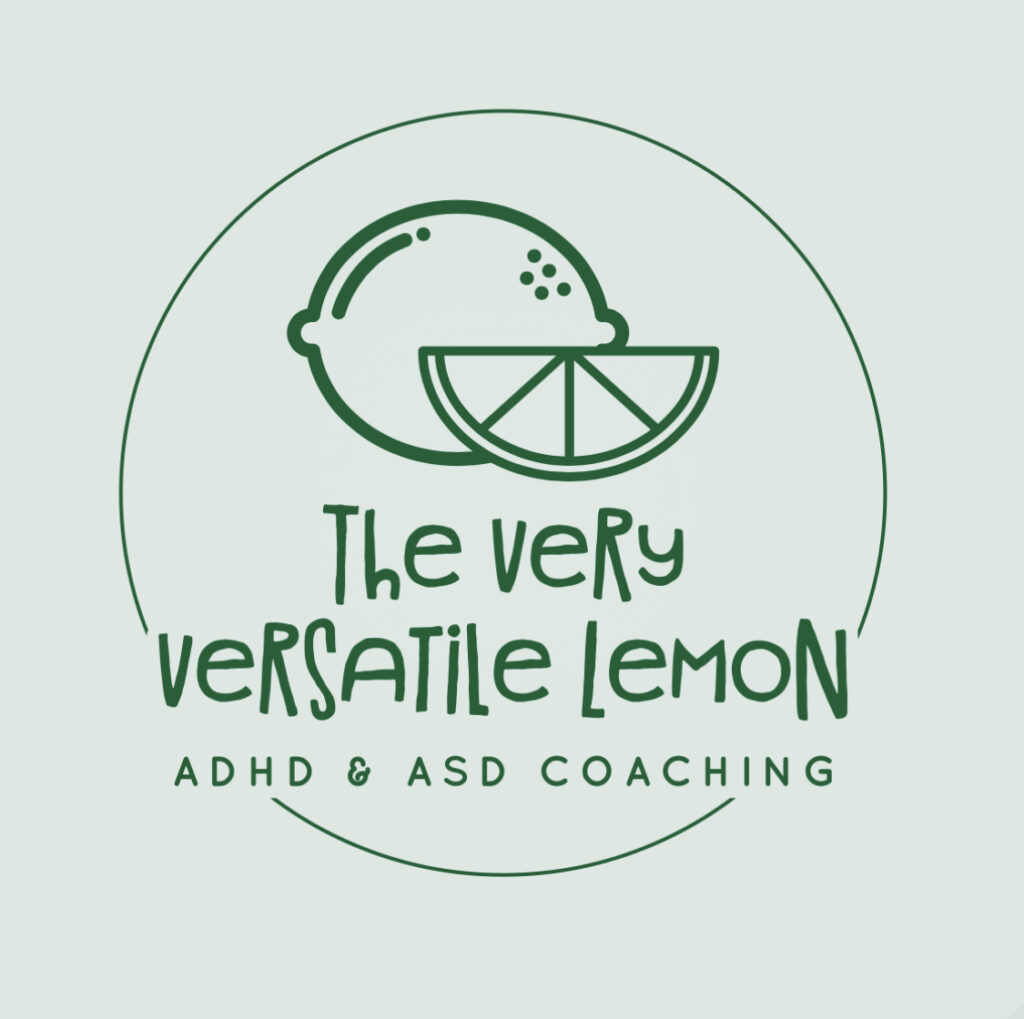
A Brighter Future
By taking an active role in managing RSD, individuals with ADHD can build stronger relationships, reduce anxiety, and experience a greater sense of well-being. Remember, you are not defined by your challenges. With determination and the right support system, you can overcome the hurdles presented by ADHD and RSD and forge a brighter future filled with positive connections and a sense of belonging.
Conclusion
The journey towards managing RSD and living well with ADHD is an ongoing process. However, with a combination of self-awareness, targeted strategies, and a supportive community, you can navigate the challenges and build a life filled with meaning and connection.
Additional Resources – Australia
- ADHD Australia: https://www.adhdaustralia.org.au/
- Australasian College of Neuropsychologists: https://groups.psychology.org.au/ccn/
- Beyond Blue: https://www.beyondblue.org.au/about-us/contact-us (For support with anxiety and depression)
- ADHD Coaching: https://versatilelemon.com
The seemingly lacking level of validation. The never-ending email chain. The constant pinging of notifications. For individuals with Attention Deficit Hyperactivity Disorder (ADHD), the bustling environment of the workplace can feel like an assault course designed to trip you up at every turn.
But what if we reframed the narrative? What if, instead of focusing solely on the challenges, we acknowledged the unique strengths that individuals with ADHD possess? Strengths that, when harnessed and nurtured, can propel ADHDers to excel in their careers and become valuable assets to any organisation.
Unlocking Your Superpowers
The first step in this journey is understanding that ADHD isn’t just about limitations; it’s a neurological difference that comes with a distinct set of superpowers. These strengths often include:
- Hyperfocus: The ability to laser-focus on tasks that individuals find engaging, leading to bursts of exceptional productivity. Imagine tackling a complex problem and becoming completely immersed in the process, losing track of time as innovative solutions flow effortlessly.
- Creativity: An innate ability to think outside the box and bring fresh perspectives to problem-solving. This “divergent thinking” allows those with ADHD to see challenges from unique angles, fostering innovation within teams and leading to breakthrough solutions.
- Enthusiasm: A natural tendency to approach work with positive energy and infectious enthusiasm. This contagious passion can motivate and inspire colleagues, creating a dynamic and stimulating work environment.
- Resilience: The ability to bounce back from setbacks and adapt to changing circumstances with agility. This characteristic allows individuals with ADHD to persevere through challenges, learn from mistakes, and continuously improve.
Building Your Toolkit for Success
By leveraging these strengths and implementing effective strategies, you can navigate workplace challenges with confidence:
- Embrace Structure and Organisation: Create consistent routines that work for you. Utilise detailed to-do lists and leverage calendars and planners to stay organised and on track.
- Minimise Distractions: Find quiet workspaces, utilise noise-cancelling headphones, and block out social media notifications during focused work periods. This reduces distractions and helps you maintain concentration (this one is my personal favourite).
- Break Down the Mountains: Divide large projects into smaller, manageable steps. This approach prevents feeling overwhelmed and allows you to focus on one achievable task at a time, facilitating a sense of accomplishment and progress.
- Communicate Openly: Openly discuss your ADHD with your manager and colleagues, explaining how they can best support you. This could involve requesting flexible deadlines, breaks for movement, or clear and concise instructions. By open communication, you empower others to understand your needs and foster an inclusive work environment.
- Seek Professional Support: Consider seeking professional guidance in the form of ADHD coaching or therapy specifically tailored to helping individuals with ADHD thrive. These professionals can equip you with additional tools and strategies, helping you develop effective coping mechanisms and optimise your strengths within the workplace and your life.

Cultivating a Neurodiverse Workplace
Employers also play a crucial role in empowering individuals with ADHD and fostering a supportive and inclusive environment:
- Offer Flexible Work Arrangements: Consider offering remote work options, adjusted schedules, or breaks for movement to cater to individual needs and preferences. This flexibility allows individuals with ADHD to work in an environment that best suits their work style and minimises distractions.
- Provide Clear and Concise Communication: Avoid ambiguity and offer multiple communication channels (written and verbal) when delivering instructions. This ensures understanding and reduces confusion for individuals with ADHD who may struggle with processing information in fast-paced environments.
- Promote Open Communication: Encourage employees with ADHD to feel comfortable discussing their needs and requesting accommodations. Foster a culture of open communication and understanding. By creating a safe space for open dialogue, you can address challenges proactively and ensure a comfortable and productive work environment for all.
- Celebrate Neurodiversity: Recognise and value the unique contributions individuals with ADHD bring to the team. Their creativity, enthusiasm, and resilience are valuable assets that can benefit the entire organisation. By embracing neurodiversity, organisations unlock the full potential of their workforce and foster a more inclusive and innovative work environment.
Embracing Your Journey
Living with ADHD doesn’t have to limit your success in the workplace. By understanding your strengths, implementing effective strategies, seeking support, and working within a supportive environment, you can create the foundation for a thriving career.
Remember, your unique neurology is not a limitation; it’s your superpower. Embrace your strengths, conquer the challenges, and chart your own course to success in the workplace. You have the potential to become a force to be reckoned with!
Don’t shy away from seeking coaching, mentorship or joining support groups specific to individuals with ADHD in the workplace. Connecting with others who understand your experiences can provide valuable insights, encouragement, and a sense of community.
Remember… change is a journey, not a destination. Be patient with yourself as you implement new strategies and navigate the seemingly never-ending challenges. Celebrate your victories, big and small, and learn from setbacks. Write these down somewhere visible to help remind and anchor you. With dedication, self-compassion, and a supportive network, you can create a fulfilling and successful career that leverages your unique strengths and allows you to thrive in the workplace.

Additional Resources:
- CHADD (Children and Adults with Attention-Deficit/Hyperactivity Disorder): https://chadd.org/
- ADDitude Magazine: https://www.additudemag.com/
- National Institute of Mental Health: https://infocenter.nimh.nih.gov/publications/attention-deficithyperactivity-disorder-adults-what-you-need-know
By taking charge of your ADHD and harnessing your unique strengths, you can transform the workplace from an assault course into a launchpad for success. Go forth, conquer your challenges, and embrace the amazing things you can achieve! Remember, you are not defined by your ADHD, but by your resilience, creativity, and unwavering spirit. Now go out there and show the world what you’re truly capable of!
Discover effective strategies and practical tips for managing anxiety and ADHD symptoms, including tools for organisation, coping strategies for daily life, and self-help techniques for individuals with ADHD and anxiety.
Overview of Anxiety Management in Individuals with ADHD
Anxiety is highly prevalent in individuals with ADHD, affecting around 50% of adults. Addressing anxiety symptoms is crucial for enhancing overall quality of life and daily functioning. Anxiety can significantly impact individuals with ADHD, exacerbating ADHD symptoms such as time blindness and emotional dysregulation. For example, individuals with ADHD may struggle with managing their time effectively and regulating their emotions when anxiety levels are high.
Moreover, the relationship between ADHD and anxiety is complex, with ADHD often intensifying anxiety symptoms due to challenges like poor working memory and impulsivity. This interconnection can lead to a cycle where anxiety worsens ADHD symptoms, creating a challenging environment for individuals. To manage this, individuals may benefit from cognitive-behavioural therapy (CBT) to address both core ADHD symptoms and anxiety-related issues. CBT can help individuals recognise and reframe negative thought patterns, providing them with practical tools to navigate through anxious moments.
Understanding the Relationship Between ADHD and Anxiety
The relationship between ADHD and anxiety is complex and often intertwined, as individuals with ADHD have a higher likelihood of experiencing anxiety disorders. This increased susceptibility is due to the unique challenges posed by ADHD, including issues like poor working memory and impulsivity, which can exacerbate anxiety symptoms. For example, the tendency to become overwhelmed by tasks and stimuli due to ADHD symptoms can trigger anxiety in various situations. Moreover, the constant struggle to maintain focus and complete tasks can fuel feelings of anxiety and stress in individuals with ADHD.
Moreover, the comorbidity of anxiety with adult ADHD underscores the importance of adopting holistic treatment strategies that address both conditions simultaneously. Integrated approaches that consider the interconnected nature of ADHD and anxiety can lead to more effective outcomes in managing symptoms and improving overall well-being. By recognising how ADHD symptoms can contribute to heightened anxiety levels, individuals can work towards developing coping mechanisms that target the root causes of their distress, ultimately enhancing their quality of life and daily functioning.

Practical Tips for Managing Anxiety and ADHD Symptoms
When it comes to managing anxiety and ADHD symptoms, practical tips play a crucial role in enhancing daily functioning. Utilising tools like wall calendars, colour-coding systems, and smartphone apps can significantly aid individuals in better organising their tasks and improving memory retention [1]. For instance, colour-coding different activities can help individuals with ADHD visualise their schedule more effectively and reduce feelings of being overwhelmed by a chaotic routine.
Additionally, breaking down tasks into smaller, manageable deadlines and incorporating time management techniques such as the Pomodoro Technique can assist individuals in staying on track and minimising anxiety levels. By dividing tasks into smaller steps and allocating specific time frames for each activity, individuals can prevent procrastination and improve their productivity. This structured approach not only helps in managing ADHD symptoms but also reduces the likelihood of feeling anxious due to looming deadlines and unfinished tasks. Moreover, implementing strategies to combat unhelpful thought patterns through techniques like reframing and creating designated areas for urgent tasks can empower individuals to maintain a sense of control over their responsibilities and minimise anxiety. For example, practising positive self-talk and designating a specific workspace for urgent tasks can prevent distractions and enhance focus, consequently reducing anxiety levels in individuals dealing with ADHD.
Coping Strategies for Daily Life
In addition to regulating emotions, establishing routines, and maintaining healthy habits, individuals with ADHD and anxiety can benefit from incorporating mindfulness practices into their daily lives. Mindfulness techniques such as deep breathing exercises, meditation, and grounding exercises can help individuals manage overwhelming emotions and reduce anxiety levels. For example, taking a few minutes each day to practice deep breathing can help individuals with ADHD and anxiety stay grounded and calm during moments of stress or anxiety.
Moreover, setting up a structured daily routine that includes designated time for work, relaxation, exercise, and self-care activities can provide a sense of stability and predictability for individuals managing ADHD and anxiety. This structured approach can help in reducing impulsivity, improving time management, and lowering stress levels throughout the day. For instance, creating a daily schedule that includes specific times for tasks, breaks, and leisure activities can help individuals with ADHD and anxiety feel more in control of their day-to-day responsibilities and emotions.
Furthermore, practising gratitude as a coping strategy can have a profound impact on the mental well-being of individuals with ADHD and anxiety. Taking time each day to reflect on and appreciate positive aspects of life , no matter how small, can shift focus from negative thoughts to positive experiences, promoting a more optimistic outlook and reducing anxiety levels. For example, keeping a gratitude journal where one writes down things they are thankful for daily can help individuals with ADHD and anxiety cultivate a mindset of gratitude and resilience in the face of challenges.

Self-Help Techniques for Individuals with ADHD and Anxiety
Incorporating self-help techniques into daily routines can significantly benefit individuals managing ADHD and anxiety. For instance, setting aside time for relaxation practices like yoga, meditation, or deep breathing exercises can effectively reduce stress levels and promote a sense of calm. Additionally, engaging in activities that encourage positive mental health, such as listening to music, practicing mindfulness, or finding moments of joy in daily life, can enhance overall well-being and resilience in the face of challenges. These simple yet powerful practices empower individuals to take an active role in their mental health and well-being, providing a sense of control over their symptoms.
Furthermore, establishing a structured routine that includes self-help activities can serve as a foundation for managing ADHD and anxiety symptoms. For example, creating a daily schedule that incorporates time for mindfulness exercises or engaging in hobbies that bring joy can help individuals maintain a sense of balance and stability. By prioritising self-care and mental health practices, individuals with ADHD and anxiety can build coping mechanisms that not only alleviate symptoms but also enhance their quality of life. Embracing these self-help techniques as part of a holistic approach to managing ADHD and anxiety can pave the way for long-term well-being and resilience in the face of daily challenges.
The Role of ADHD Coaching in Managing Anxiety
Individuals with ADHD often struggle with managing anxiety symptoms, and seeking support from an ADHD coach can be a game-changer in their journey towards better mental health. This strength-based approach to embracing and working with an ADHD diagnosis instead of battling against it, is an effective way to manage ADHD and anxiety. An ADHD coach plays a crucial role in helping individuals understand the connection between ADHD and anxiety, offering insights into how these conditions intertwine and influence each other. By shedding light on this relationship, individuals can gain a deeper understanding of their strengths and challenges, and work towards managing them with targeted strategies and support.
In addition, an ADHD coach can provide tailored strategies and techniques to address specific challenges faced by those with ADHD and anxiety. One way an ADHD coach can help is by assisting individuals in creating a structured routine that includes dedicated time for relaxation and stress management activities, such as yoga or mindfulness exercises. This personalised approach can aid in alleviating anxiety symptoms and improving overall well-being by fostering a sense of control and stability in daily life.
Moreover, an ADHD coach can assist individuals in implementing practical techniques to cope with anxiety on a daily basis. For example, they may help create a structured routine that includes mindfulness practices, exercise, and regular breaks to alleviate anxiety symptoms. By working closely with an ADHD coach, individuals can learn how to identify triggers, manage their reactions during challenging situations, and develop resilience in the face of anxiety-provoking events. This personalised approach can empower individuals to take control of their anxiety and ADHD symptoms, leading to improved overall well-being and quality of life.
An ADHD coach can work with individuals to identify triggers that worsen their anxiety and ADHD symptoms, helping them develop coping mechanisms to navigate through challenging situations. By incorporating strategies, techniques and positive self-talk practices suggested by the coach and client, individuals can reframe negative thought patterns and build resilience in the face of anxiety-inducing circumstances. This collaborative effort between the individual and the coach promotes a proactive approach to managing anxiety and ADHD, empowering individuals to take charge of their mental health and effectively cope with daily stressors. Seeking support from an ADHD coach not only provides practical tools and strategies but also offers a supportive environment for individuals to explore their concerns and work towards sustainable improvements in managing their conditions.

The Role of Medication and Therapy
Medication and therapy are vital components in the treatment of ADHD and anxiety, offering a multifaceted approach to managing these conditions. While medication is instrumental in alleviating the core symptoms of ADHD, therapy, particularly cognitive-behavioural therapy (CBT), is essential for addressing the intertwined anxiety symptoms that often accompany ADHD. For instance, individuals with ADHD may struggle with time blindness and emotional dysregulation, which can significantly impact their anxiety levels.
Moreover, the combination of medication and therapy has been shown to be highly effective in enhancing the overall quality of life for individuals grappling with ADHD and anxiety. In the case of ADHD, medication can assist in improving focus, impulse control, and hyperactivity, thereby reducing the stress and anxiety that these symptoms may trigger. Simultaneously, therapy, like CBT, equips individuals with valuable tools to challenge negative thought patterns, regulate emotions, and develop effective coping strategies for daily stressors.
By integrating medication and therapy into a comprehensive treatment plan, individuals with ADHD and anxiety can experience significant relief and improvement in their symptoms. Medication addresses the neurological aspects of ADHD, while therapy delves into the psychological and behavioural components, fostering a holistic approach to managing these intertwined conditions. Working in tandem, medication and therapy empower individuals to navigate through the challenges posed by ADHD and anxiety, enhancing their overall well-being and quality of life.
Understanding and navigating the challenges of a neurotypical-ADHD relationship, including communication strategies, managing symptoms, seeking professional help, and celebrating the unique strengths of the relationship.
Impact on Neurotypical-ADHD Relationships
The impact of ADHD on neurotypical-ADHD relationships can be profound, influencing various aspects of the partnership. For instance, the symptoms of ADHD, such as distractibility, disorganization, and lack of focus, can significantly alter the relationship dynamics. Consider a scenario where an individual with ADHD struggles with distractibility, finding it challenging to maintain attention during conversations or important moments with their neurotypical partner. This can lead to feelings of neglect or lack of engagement, affecting the emotional connection in the relationship.
Moreover, undiagnosed ADHD can exacerbate the challenges within the relationship, potentially leading to conflict and dysfunction. Picture a situation where the neurotypical partner feels neglected or misunderstood due to their ADHD partner’s undiagnosed condition, which may lead to frustration and resentment. This can create a cycle of misunderstanding and miscommunication, further straining the relationship. Additionally, misconceptions about ADHD in relationships can contribute to a lack of empathy or support, adding to the complexity of the situation and potentially hindering the ability of the couple to navigate the challenges effectively.
Understanding the specific ways in which ADHD impacts the relationship dynamics is crucial for both partners to develop strategies and foster a supportive environment that addresses the unique challenges posed by the condition. By acknowledging these challenges, the couple can work together to find effective ways to mitigate the impact of ADHD on their relationship, fostering understanding, empathy, and resilience.

Understanding ADHD and its Impact on Relationships
ADHD can have a profound impact on the dynamics of a relationship, affecting both partners involved. For the individual with ADHD, the condition can lead to symptoms such as distractibility, disorganization, and a lack of focus, which can influence their ability to engage in the relationship effectively. These symptoms may cause the neurotypical partner to feel neglected or overlooked, creating a sense of disconnect and frustration within the relationship. For instance, a person with ADHD may struggle to remember important dates or conversations, which can make their partner feel unimportant or undervalued.
Moreover, ADHD can lead to misunderstandings and disagreements over responsibilities, such as household chores or financial management, which can create tension in the relationship. For example, a partner with ADHD may unintentionally overlook household tasks, leading to feelings of unfairness and frustration from the neurotypical partner. These instances can cause strain and conflict, highlighting the need for open communication and mutual understanding in neurotypical-ADHD relationships.
In addition, the challenges of ADHD can sometimes be misinterpreted by the neurotypical partner, leading to feelings of confusion or inadequacy. It’s important for both partners to recognise the impact of ADHD on the relationship and work together to find effective strategies for managing its effects. By understanding the complexities of ADHD and its influence on the relationship, both partners can navigate the challenges with empathy, patience, and a willingness to learn from each other’s perspectives.
Communication Strategies for a Successful Neurotypical-ADHD Relationship
When navigating a neurotypical-ADHD relationship, employing effective communication strategies is pivotal for the well-being of both partners. One valuable communication approach involves actively practising compassion and understanding to support each other through the unique challenges that ADHD can present. For instance, acknowledging the impact of distractibility and disorganization on the neurotypical partner and offering support and understanding can foster a more empathetic and nurturing relationship dynamic.
Moreover, managing conflicts in a neurotypical-ADHD relationship can be facilitated by consciously choosing battles wisely, demonstrating empathy, and refraining from intense nagging or criticism. For example, instead of getting embroiled in every minor disagreement, partners can proactively work towards a more peaceful coexistence by addressing only the most pertinent issues, thereby minimising unnecessary tension and fostering a more supportive environment. Furthermore, utilising positive language and expressing understanding towards the unique challenges associated with ADHD can significantly contribute to open and effective communication between partners, ultimately strengthening the bond of the relationship. By embracing these communication strategies, neurotypical-ADHD couples can cultivate an environment of understanding, empathy, and support, which are essential for a successful and fulfilling relationship.

Managing ADHD Symptoms and Challenges in a Relationship
When it comes to managing ADHD symptoms and challenges in a relationship, it’s crucial to understand the unique aspects of ADHD and how they can impact the dynamics between partners. For instance, ADHD often leads to distractibility, disorganisation, and a lack of focus, which can pose challenges in a relationship. An example of this might be when a partner with ADHD struggles to maintain focus during important conversations or repeatedly forgets to complete household tasks, leading to frustration and misunderstandings.
In addition to understanding the impact of ADHD, it’s essential to implement smart solutions that can help navigate these challenges. For instance, using Nonviolent Communication, breaking the parenting dynamic, and learning about the specific ways in which ADHD affects the individual can be instrumental in fostering a supportive environment. An example of breaking the parenting dynamic could involve reframing communication and decision-making processes to ensure that both partners feel equal and respected in the relationship.
Furthermore, creating a peaceful and supportive atmosphere involves more than just understanding the condition; it also necessitates practical strategies and emotional support. For instance, scheduling private time for the relationship, slowing down to calm the mind, and choosing battles wisely can help reduce conflicts and promote a more harmonious connection. An example of this could be setting aside dedicated time for meaningful conversations and activities, allowing both partners to reconnect and strengthen their bond. Ultimately, by combining understanding, strategic solutions, and emotional support, partners can work together to effectively manage ADHD symptoms and challenges within their relationship.
Seeking Professional Help and Support
When it comes to managing the unique challenges of a neurotypical-ADHD relationship, seeking professional help and support is crucial. Educating oneself about ADHD and seeking guidance from a professional can significantly reduce the burden on the relationship. For instance, a couple struggling with the impact of ADHD on their relationship might benefit from consulting a therapist specialising in ADHD. This professional can offer tailored strategies and tools to help the couple navigate the challenges they are facing, providing them with a clearer understanding of how ADHD affects their relationship dynamic.
Moreover, both partners play a pivotal role in the success of the relationship, and seeking professional help can alleviate the challenges they may encounter. For example, a neurotypical partner might find it beneficial to seek individual therapy to gain a better understanding of ADHD and how it influences their relationship. Similarly, the partner with ADHD could benefit from therapy or coaching to develop strategies for managing their symptoms within the context of the relationship. By investing in professional support, both partners demonstrate a commitment to the relationship’s well-being and growth.
Additionally, it is advisable to seek professional assistance before the relationship is significantly impacted by ADHD-related issues. This proactive approach allows couples to address potential challenges early on, preventing these issues from escalating and causing lasting damage to the relationship. Seeking early intervention can provide couples with the tools and resources needed to effectively manage ADHD-related difficulties, fostering a stronger and more resilient relationship in the long run.

Celebrating the Strengths and Unique Qualities of Neurotypical-ADHD Relationships
Embracing the strengths and unique qualities of neurotypical-ADHD relationships is essential for fostering a positive and supportive environment. Honesty, openness, and understanding the ways in which behaviour can impact the relationship are key factors in celebrating the strengths of such relationships. Additionally, supporting the partner and working on building trust and openness can contribute to a more fulfilling and harmonious relationship.
For more blog articles, please click here.
[1] Source: https://add.org/six-secrets-to-a-happy-adhd-relationship Source: https://www.additudemag.com/adhd-divorce-rate-marriage-help Source: https://www.psychiatrist.com/news/3-ways-adhd-makes-romantic-relationships-more-challenging Source: https://sanespaces.com/2021/04/adhd-relationship-solutions-neurotypical
This article explores the connection between autism, ADHD, and Ehlers Danlos Syndrome, highlighting the shared symptoms, co-occurrence of conditions, available treatments, and resources for support.
Understanding Autism, ADHD, and Ehlers Danlos Syndrome
Autism, ADHD, and Ehlers Danlos Syndrome are complex conditions that have significant impacts on individuals’ lives. Autism is often associated with challenges in social interaction, communication, and repetitive behaviours, while ADHD is characterised by symptoms of inattention, hyperactivity, and impulsivity. On the other hand, Ehlers Danlos Syndrome encompasses a group of genetic disorders affecting connective tissues, leading to a range of symptoms, including joint hypermobility.
Individuals with autism, ADHD, and Ehlers Danlos Syndrome commonly experience various challenges and overlapping symptoms. For instance, individuals with autism may exhibit sensory sensitivities, making it difficult for them to process and respond to sensory information like touch, sound, and light. Similarly, individuals with Ehlers Danlos Syndrome may also experience sensory issues, such as heightened sensitivity to pain and touch due to their connective tissue disorder. Understanding the shared symptoms and challenges among these conditions is crucial in providing comprehensive and effective support and care for individuals affected by them.
Moreover, individuals with ADHD often struggle with executive function skills such as planning, organisation, and time management. These challenges can significantly impact their daily lives, education, and work. In the same vein, individuals with Ehlers Danlos Syndrome, especially those with joint hypermobility, may also face difficulties in motor skills and coordination due to the instability of their joints. Therefore, recognising these commonalities among the conditions can aid in the development of tailored interventions and therapies to address the diverse needs of individuals with autism, ADHD, and Ehlers Danlos Syndrome.
The Connection: Joint Hypermobility and Neurodivergence
The connection between joint hypermobility and neurodivergence is a significant area of research, shedding light on the overlapping symptoms and conditions associated with Ehlers Danlos Syndrome and autism. Studies have found that individuals with joint hypermobility , Ehlers Danlos Syndrome (EDS), and hypermobility spectrum disorders are more likely to be autistic, highlighting a potential link between these conditions. For instance, a study by BSMS revealed that over 50% of neurodivergent participants had elevated levels of hypermobility, suggesting a strong association between joint hypermobility and autism.
Moreover, neurodivergent individuals with joint hypermobility have reported experiencing more symptoms of pain and dysautonomia. This overlap of symptoms indicates the complexity of managing these conditions and the need for tailored medical intervention. Additionally, the Beighton Scoring System, which is a standard physical assessment to identify joint hypermobility, is recommended for use in identifying joint hypermobility in autistic individuals. This system can be an essential tool for healthcare professionals to diagnose and understand the extent of joint hypermobility in individuals with autism, enabling them to provide appropriate care and support.
The high prevalence of joint hypermobility in autistic individuals and the increased symptoms of pain and dysautonomia highlight the need for greater awareness and understanding of this association. It is crucial for medical practitioners to recognise the interconnection between joint hypermobility and neurodevelopmental conditions like autism and to develop targeted interventions to address the specific needs of individuals with these overlapping conditions. This comprehensive approach can lead to improved outcomes and better quality of life for those affected by joint hypermobility and neurodivergence.
Co-Occurrence of Conditions
The co-occurrence of Ehlers Danlos Syndrome (EDS) and autism is a topic of growing interest and concern within the medical and research communities. Studies have shown that there is a higher prevalence of EDS in individuals with autism compared to the general population, indicating a potential link between the two conditions. This presents a significant challenge for individuals and their families, as the simultaneous management of symptoms associated with both EDS and autism can be complex and demanding.
For instance, many autistic individuals with EDS often experience overlapping symptoms, such as attention-deficit/hyperactivity disorder (ADHD), learning disorders, sensory sensitivities, and mental health issues. This overlap can exacerbate the challenges faced by individuals, potentially impacting their daily functioning and overall quality of life. Moreover, both conditions are associated with coordination problems, sensory issues, autonomic dysregulation, and immune dysregulation, further complicating the clinical picture for individuals living with these co-occurring conditions. This underscores the need for a comprehensive and multidisciplinary approach to address the diverse and interconnected symptoms arising from the co-occurrence of EDS and autism.
It is crucial for healthcare professionals to be well-informed about the potential co-occurrence of these conditions, ensuring that individuals receive accurate diagnoses and appropriate support. Moreover, families and caregivers should be equipped with the necessary resources and guidance to navigate the complexities of managing these co-occurring conditions effectively. By recognising and addressing the shared symptoms and challenges associated with EDS and autism, it becomes possible to provide more targeted and holistic care to individuals affected by these conditions. [2].
Available Treatments and Therapies
When it comes to individuals affected by autism, ADHD, and Ehlers Danlos Syndrome, it’s essential to understand that they may require similar therapies and treatments due to the overlapping symptoms and challenges associated with these conditions. For instance, individuals with autism often benefit from behavioural therapies, speech therapy, and occupational therapy to address communication difficulties and sensory issues, which can also be beneficial for individuals with ADHD and Ehlers Danlos Syndrome. Moreover, those with Ehlers Danlos Syndrome may require physical therapy and pain management strategies to address joint hypermobility and chronic pain, which can also be beneficial for individuals with autism and ADHD who experience similar issues [4].
Furthermore, management of symptoms can be achieved with support and advice from healthcare professionals, including a multidisciplinary approach involving specialists such as neurologists, geneticists, occupational therapists, and psychologists. For example, individuals with Ehlers Danlos Syndrome and autism may benefit from a comprehensive treatment plan that addresses their physical, neurological, and psychological needs. This could include tailored exercise regimens to improve joint stability, cognitive behavioural therapy to address anxiety or depression, and medications to manage autonomic dysregulation [4].
In addition, there is a pressing need for specific recognition, research, and treatments for the association between Ehlers Danlos Syndrome and autism. Currently, there is a lack of specific guidelines or targeted interventions for individuals who have both conditions. Therefore, increasing awareness among healthcare professionals and conducting further research to understand the unique needs of individuals with both Ehlers Danlos Syndrome and autism is crucial to developing effective treatments and improving the quality of life for these individuals. These efforts can lead to the development of tailored interventions that address the complex interplay of symptoms and provide the necessary support for individuals affected by the co-occurrence of these conditions.

Support and Resources
The Ehlers-Danlos Society has been actively working to increase awareness of the intricate relationship between autism and joint hypermobility. By collaborating with experts like Dr. Carolina Baezo-Velasco, who is an expert in Ehlers Danlos Syndrome and Autism, the society has been able to provide valuable insights and resources for individuals and families affected by these conditions. Their efforts have been instrumental in shedding light on the co-occurrence of Ehlers Danlos Syndrome and autism, offering support and guidance to those navigating these complex conditions.
For parents of children with autism who exhibit symptoms consistent with Ehlers Danlos Syndrome, obtaining a proper diagnosis and seeking appropriate treatment is crucial. The overlap of symptoms between these two conditions necessitates careful consideration and evaluation. By being proactive in seeking medical attention, parents can ensure that their child receives the necessary support and interventions tailored to their specific needs. This proactive approach can significantly impact the child’s well-being and overall quality of life, empowering them to better manage the challenges associated with the co-occurring conditions.
Furthermore, for individuals and families seeking a deeper understanding of Ehlers Danlos Syndrome in the context of autism, a wealth of resources is readily available. These resources encompass educational materials, support networks, and guidance for navigating the unique challenges posed by the co-occurrence of these conditions. Access to reliable information and support can be invaluable in empowering individuals and families to make informed decisions and navigate the complexities of living with autism and Ehlers Danlos Syndrome.
For more blog posts, please click here.
Introduction
Autism Spectrum Disorder (ASD) and Attention Deficit Hyperactivity Disorder (ADHD) are neurodevelopmental disorders that affect millions of people worldwide. Traditionally, these conditions have been studied predominantly in boys and men. However, recent research has begun to shed light on how they manifest differently in girls and women. This blog post will delve into the complex world of cooccurring ADHD and autism in females, a topic that has been largely overlooked until now.
Understanding Autism and ADHD
Before we delve into the specifics of cooccurring ADHD and autism in girls and women, it’s essential to understand what these conditions entail. Autism is a developmental disorder characterised by difficulties with social interaction, communication challenges, and repetitive behaviours. On the other hand, ADHD is marked by persistent patterns of inattention, hyperactivity, impulsivity that interfere with functioning or development.
Historically, these conditions were considered separate entities with distinct diagnostic criteria. However, recent studies have shown a significant overlap between ASD and ADHD symptoms leading to a high prevalence of cooccurring ADHD and autism. This shift in understanding has prompted researchers and clinicians to explore the connections between the two conditions more deeply, with a focus on tailored interventions and support for individuals who may experience symptoms of both. Understanding the interplay between ADHD and autism spectrum disorder can lead to more effective strategies for diagnosis, treatment, and long-term management, ultimately improving the quality of life for those affected by these complex neurodevelopmental conditions.

Cooccurring ADHD and Autism in Girls and Women
Research indicates that females with ASD are more likely to have cooccurring ADHD than their male counterparts. This dual diagnosis can exacerbate the challenges faced by these individuals as they navigate social interactions, academic performance, emotional regulation, among other areas of life.
The issue of underdiagnosis and misdiagnosis of certain disorders in girls and women is indeed a critical concern that has far-reaching implications. Societal stereotypes often associate certain disorders with males, leading to a lack of recognition and understanding when these disorders manifest in females. Additionally, the differences in symptom presentation between genders can further exacerbate the problem, resulting in many girls and women remaining undiagnosed or misdiagnosed for extended periods of time.
As a consequence of this delay in diagnosis, individuals may face significant mental health challenges, such as heightened anxiety and depression stemming from unaddressed struggles. The toll of navigating life with undiagnosed or misdiagnosed disorders can be immense, impacting daily functioning, personal relationships, and overall well-being. It is imperative to raise awareness about these disparities in diagnosis and to advocate for improved understanding and recognition of the diverse ways in which these disorders can manifest across different genders. By facilitating earlier and more accurate identification, individuals can receive the support and interventions they need to effectively manage their conditions and mitigate the associated mental health implications.
Some symptoms of comorbid ADHD and autism can include:
- Social Challenges: Girls and women with cooccurring ADHD and autism may struggle with social interaction, finding it hard to understand and interpret social cues. They might also find it challenging to form and maintain friendships.
- Sensory Sensitivities: Individuals may experience heightened sensitivities to sensory stimuli, including light, sound, touch, and taste. This can lead to discomfort and distress in everyday environments.
- Repetitive Behaviours: Engaging in repetitive movements or actions, such as hand-flapping or rocking, is common among those with cooccurring ADHD and autism. These behaviours can serve as self-soothing mechanisms.
- Difficulty with Transitions: Changes in routine or unexpected events can be particularly distressing for individuals with cooccurring ADHD and autism, leading to anxiety and meltdowns.
- Attention and Executive Functioning Challenges: Problems with sustained attention, organisation, and task completion are typical. Additionally, difficulties in planning and prioritising tasks may be apparent.
The Gender Gap: Why Are Girls and Women Overlooked?
One reason why girls and women might be overlooked when it comes to diagnosing cooccurring ADHD and autism is the gender bias in the diagnostic criteria. These criteria were developed based on studies conducted predominantly on boys and men, leading to a skewed understanding of how these conditions present in females.
Girls with ASD often exhibit less obvious signs compared to boys. They may have fewer repetitive behaviours and may be better at masking their social communication difficulties by mimicking others’ behaviours. Similarly, girls with ADHD are more likely to present with inattentiveness rather than hyperactivity, which can be mistaken for daydreaming or lack of interest.
Furthermore, societal expectations and norms often pressure girls and women to conform, leading them to develop coping mechanisms that mask their symptoms. This ‘camouflaging’ can make it even more challenging for clinicians to identify these conditions.
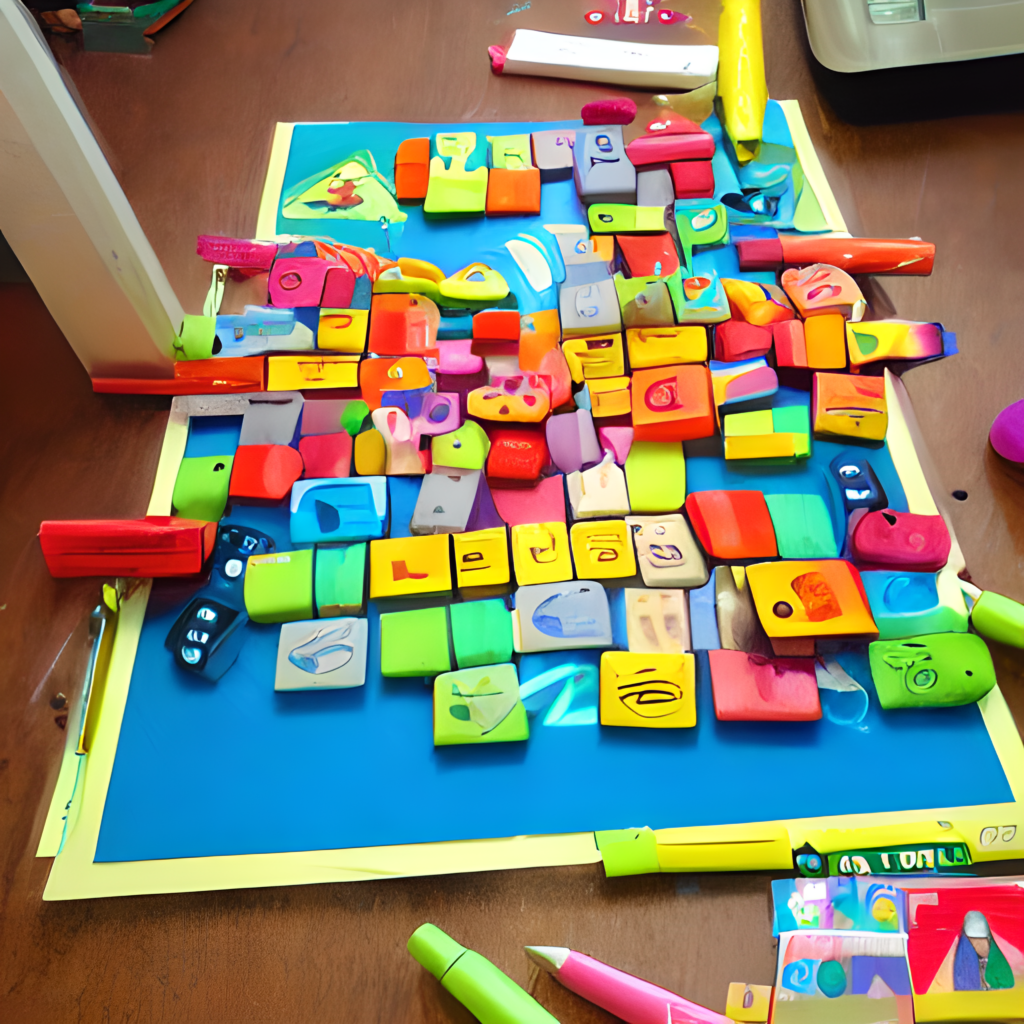
The Importance Of Early Diagnosis and Intervention
Early diagnosis and intervention are crucial for individuals with cooccurring ADHD and autism. It allows for timely access to therapies and supports that can significantly improve their quality of life. For girls and women, this could mean avoiding years of feeling ‘different’ without knowing why, thus preventing the onset of secondary mental health issues.
Healthcare professionals play a crucial role in recognising and understanding the gender differences in symptom presentation for Autism Spectrum Disorder (ASD) and Attention-Deficit/Hyperactivity Disorder (ADHD). It is important for them to be aware that the manifestation of these conditions can vary between boys and girls, men and women. By being knowledgeable about the unique ways in which ASD and ADHD may present in different genders, healthcare professionals can ensure more accurate diagnoses and better tailored interventions.
Moreover, it is essential for healthcare professionals to consider the possibility of dual diagnoses when assessing patients with complex profiles. This means understanding that an individual may present symptoms that align with more than one condition, such as having both ASD and ADHD. Recognizing the potential for comorbidities is vital in providing comprehensive care and support to patients.
In summary, raising awareness among healthcare professionals about gender-specific symptomatology for ASD and ADHD, as well as the potential for dual diagnoses, can lead to more effective and personalised care for individuals with these conditions.”
Conclusion
Cooccurring ADHD and autism in girls and women is a complex issue that requires further research and awareness. By understanding how these conditions manifest differently in females compared to males, we can ensure that they receive accurate diagnoses earlier in life. This will enable them to access appropriate supports sooner, improving their overall wellbeing.
In conclusion, it’s not a matter of one or the other but recognising that both can coexist. With increased awareness among healthcare providers, educators, parents, and society at large; we can ensure that girls and women with cooccurring ADHD and autism are identified early on so they can receive the help they need to thrive.
For more information on ADHD and Autism-related topics, please take a look at my other blog posts, which can be found here.

